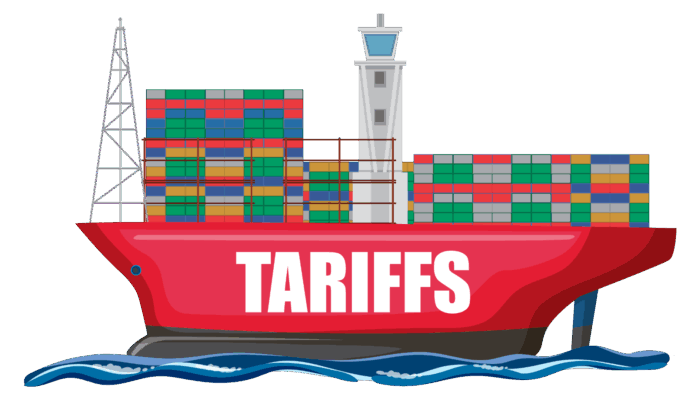Does your business fulfill digital orders from several locations? If so, you need order management software. But what kind?
Distributed Order Management System (DOM) vs. Order Management System (OMS)
There are two main types: order management systems (OMS) and distributed order management (DOM) systems. Both of these aim to improve customer satisfaction and help you manage the lifecycle of orders. And often the terms are used interchangeably. But there are some subtle differences you need to be aware of.
The right platform will help you exceed customer expectations. It will also help strengthen your brand image and make your business more efficient.
Here, we’ll talk through key differences, highlight real-world applications, and help you decide which order fulfillment technology will help you meet your organizational goals.
Understanding order management systems
In the world of digital commerce, your order management system sits at the center of, or is the brain behind, your inventory availability and fulfillment operations. It serves three key functions:
- It provides an accurate, unified view of inventory availability
- Consumes orders from digital channels, manages sourcing logic, so you can fulfill from the best location
- Helps you manage the full order lifecycle from order processing through returns.
What is an order management system, and how does it work?
What is OMS software, exactly? In simple terms, it’s a technology that provides visibility and order optimization from before the buy button through to fulfillment.
Here’s a basic rundown of how order management works if a brand or retailer is shipping from two distribution centers (DCs) in a single country:
- The customer searches for the product they want, and the website shows whether or not it’s in stock.
- The customer places an order for the product, which is sent from the online store to the OMS.
- The OMS determines which DC should fulfill the order, and routes it to the Warehouse Management System (WMS) for that location. It also places a hold on that stock so it’s no longer available online.
- A warehouse employee confirms the order details (e.g., the shipping address and package contents). The WMS then updates the OMS that the order has been shipped.
All these processes were traditionally tracked using just the commerce platform, ERP and WMS. With the ERP used to manage the lifecycle of orders.
And if your demand is fairly stable, you don’t ship from many locations, and don’t sell in more than one digital channel or country, it may be fine. But while an ERP can be used to manage orders, it’s not a dedicated OMS. And it wasn’t designed to manage the distribution of orders at scale.
What is a Distributed Order Management System and how does it work?
The term ‘distributed order management’ came about when ecommerce started to get more complex. Rather than just fulfilling online orders from a distribution center, retailers saw an opportunity. If they could fulfill online orders from stores, it could improve their inventory utilization, and lower delivery costs. But there was one problem.
When you ship from lots of locations, there are many factors that impact sourcing decisions. Do you route the order to the location that’s closest to the customer? Route it further away to a location where all items are in stock to reduce split shipments? The location with the slowest moving stock that is more likely to get marked down? This was way too much complexity for an ERP to handle. Enter the distributed order management system, or DOM.
A DOM does three things really well that an ERP doesn’t.
- Manages inventory availability at scale – It consumes data from all your back end systems really quickly. Lets you control what you make available to each sales channel, or country. And can respond to tens of thousands, or millions of availability API calls every day, without increasing page load speeds.
- Fine-tuned sourcing logic – It gives you more control over your sourcing logic so you can optimize it based on your business priorities – customer experience, inventory turns, delivery costs, on time in full (OTIF) rate, markdowns, etc.
- Automates manual processes – It provides full order lifecycle workflows, and easy integration tools, so you can automate manual steps in the order fulfillment process like fraud checks, escalations, rerouting at risk orders, and triggering customer notifications for exceptions.
Exploring distributed order management (DOM) systems
Distributed order management falls under the umbrella of OMS, but DOM is a smarter, more advanced sibling that allows for quick optimization of sourcing and fulfillment based on factors like inventory availability, proximity to the consumer, and estimated shipping costs.
Think of distributed order management as an efficiency multiplier. Order management systems are already more efficient than traditional fulfillment strategies. What is distributed order management, and why does it matter?
Distributed order management is the advanced process of orchestrating order sourcing and fulfillment. It uses rule-based workflows and order fulfillment logic that can be fine tuned to enable the best sourcing strategies to fit your business. This includes the use of time based sourcing logic. What does that mean?
Say you have a standard sourcing strategy for regular business times, but during peak periods you want to use a different sourcing strategy. One that protects your in-store experience at flagship stores. But you only want it to be active during a certain timeframe. With a distributed order management system you can create time based sourcing logic to meet this need in advance. That way it will automatically turn on during your peak season, and revert back to your standard sourcing strategy after the spike in demand has passed.
A DOM reviews many factors when processing a customer order. Typically, distributed order management platforms look to do three main things:
- Improve profits by choosing the best location to ship from
- Shorten the delivery timeline
- Increase customer satisfaction
DOM can also reduce your transportation costs. How? By reducing the distance between fulfillment locations and customers. This technology improves your inventory management capabilities. They also help you make the most of your regional distribution network.
Distributed order management software can also help to reduce carbon emissions. They cut out wasteful shipping from the supply chain. DOM benefits everyone, including businesses, customers, and the environment.
Key differences between DOM and OMS
There are five key differences between traditional OMS and DOM technology. Here’s a brief overview of each.
1. Scalability and flexibility
Distributed order management solutions are more agile and flexible than a standard OMS. DOM can support vast, complex distribution and fulfillment networks. A traditional order management system is better suited for a linear distribution model.
Switching over to DOM technology can drive business growth and help you save money. DOM can also support multiple sales channels for scalability and organizational flexibility.
2. Multi-channel support
Distributed order management systems also support multi-channel sales strategies. You can use them to surface stock availability to any digital channel, at scale. This enables customers to find you wherever they choose to shop.
Offering omnichannel support has been vital in the modern e-commerce ecosystem. Today’s consumers expect a seamless interaction with your brand, regardless of the channel they use. With distributed order management you can process orders from third-party platforms, your website, social media channels, and more.
3. Inventory visibility and management
DOM technology works together with your enterprise resource planning (ERP) solution, warehouse management system (WMS), and in-store Point of Sale (POS) solutions. This provides real-time inventory visibility. By keeping a close eye on stock levels in real time, a DOM can prevent over promising, canceled orders, and ultimately, disappointed customers.
4. Order routing and optimization
Leading DOM platforms allow for the ability for users to apply custom rules and advanced logic to find the ideal fulfillment location. In contrast, a standard OMS simply routes the order to a fulfillment center. They don’t consider distance to the customer, stock levels, or delivery times.
DOM platforms speed up order entry and fulfillment can lower your operating costs and speed up your delivery times. The results? Streamlined fulfillment processes and happier customers.
5. Integration capabilities
An OMS can integrate with other platforms. But modern DOM technology is more versatile and nimble than ever before.
With application programming interfaces (APIs), you can connect your distributed order management system to any other technology or platform using APIs—such as your ERP, WMS, POS, and other key business platforms.
Bringing your foundational tech together reduces the risk of human errors during data intake. It also speeds up the flow of information across your organization.
Real-world applications
Adding an order management system to the mix can yield significant benefits. But distributed order management systems benefit businesses and their customers even more. Let’s look at a few Fluent Commerce customers as an example.
First, there’s Psycho Bunny. This clothing brand has gained traction among an international audience.
Since 2005, Psycho Bunny has enjoyed stable growth. However, order management limitations prevented the brand from taking its next leap forward. To solve this problem, the company adopted Fluent Order Management, a distributed order management system.
After implementing Fluent Order Management, Psycho Bunny experienced:
- A 33% reduction in average time to deliver
- A 50% reduction in split shipments
- A 93% reduction in short shipments

These sorts of impressive results aren’t the exception. They’re the rule.
Another Fluent Commerce client, Breitling, is a historic brand founded in 1884. The company’s staying power is due to its ability to adapt to changing market conditions.
As part of this long-standing tradition, Breitling also adopted Fluent Order Management. In doing so, it increased online sales by 20% in just a few short months and elevated the customer experience.
Challenges and considerations
Starting to use any new technology can be challenging. That’s especially true if you’re unfamiliar with order management systems. Where do you begin?
You can reduce your challenges by choosing the right type of platform. One with a future forward vision that will meet your needs, both now, and several years from now. Remember, this is a longer term investment. You’ll want to choose a vendor who feels like a true partner, who digs in and really tries to understand your use cases. So, invest some time to create a list of use cases that really reflect your business. Then make sure your vendor selection process includes deep dives into how the solution can support both your everyday needs, and some more complicated scenarios. These sessions can be way more insightful and revealing than a long feature list. And finally, ask them to walk you through the implementation process.
Many solutions will take longer to implement than others. Some can be rolled in weeks, others will take 12 months or more. And the faster the go-live, the faster you’ll get a return. So ask good questions, like:
- How long does it typically take to go-live with Phase 1?
- What are your recommendations for keeping scope small?
- What did customers with quick implementations do well?
Then create a pros and cons list for potential vendors, read testimonials, and engage with them for more information before reaching a final decision.
Distributed Order Management from Fluent Commerce: Fluent Order Management
A distributed order management system can deliver long-term value to your organization. It can also insulate it from challenges in the future.
As you start your search, consider factors like short and long-term costs. Think about how easy or hard it will be to integrate a new system. What support do you need internally in your organization?
Take advantage of demos so you can see a solution in action before you make a commitment. Want to explore distributed order management systems in greater depth? Book a free demo of Fluent Order Management, a best-in-class DOM solution.



